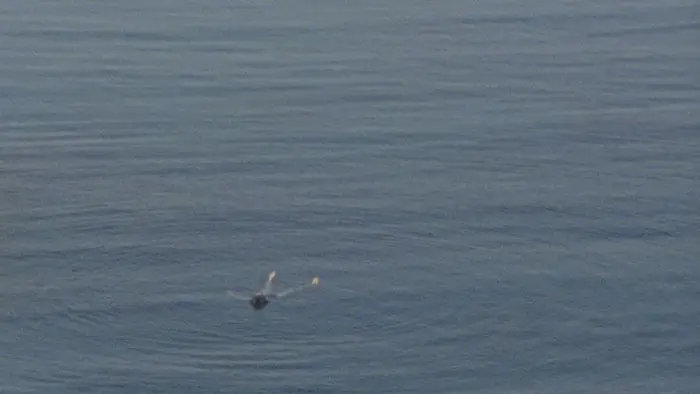
So all the footage, that was all shot by you? This is not to demean it, but it looked like stock footage only in the sense that the feel and the images feel older. Stuff from the late ’80s, mid-’90s, somewhere around there. Was that a trick intentional or just what was available to you at the time?
I don’t think it was necessarily intentional to feel nostalgic in any way, but we did make the deliberate decision to shoot on film. I think for a few reasons, one was just the way we went into the project, and the way we wanted to approach all of the things we shot and how it interacted with the animation. The Super 8 film just had a texture and a quality that felt like it fit in more with the styles of animation that we were going for. The care that you have to put in to shoot something off film felt more aligned with the process that we were going for with the frame by frame animation.
It also was something that we had access to. We were going to a lot of different temples in Japan, and it felt like to bring a big camera, it didn’t feel right. We wanted to do this respectfully. We were running around with a small camera and a tripod in our backpack on bikes. We filmed a lot of the scenes in Japan. So I think yeah, there were a few reasons why. But we’d gotten that before, that it feels like it was footage that we didn’t shoot ourselves, which is interesting.

“The Super 8 film just had a texture and a quality that felt like it fit in more with the styles of animation…”
Yeah. Well, the one that comes to my mind is the beach scene with, I think it’s a father and son and just the way they’re dressed. Then you have a power plant…
Katelyn Robledo: That was, I think, that was one of the first things we shot. It was like the first real, super eight before we got the grant from Tribeca, I think we were testing things, and we were hanging out at the beach together.
So let me ask you this as filmmakers, it’s a very artful film. I think your narration is very thoughtful, and I think the imagery lends itself to being artistic as well. Is that your background? What led you up to this point in terms of this film and the way you decided to shoot it?
Dane: Both of us were classmates at NYU, and we were both studying film there. We had collaborated on projects during school, and this was both of our first projects after graduating. I think Katelyn and I had never really made something of this caliber. And for me, with the personal experience… I’m always trying to think about things like from a filmmaker’s perspective and still trying to guess whether something would make a good story. So when I read about the Mizuko kuyō thing, I just really knew that it was something that no one knew about in the U.S, and that would be impactful.
Katelyn Robledo: I think the film ended up being a pretty genuine representation of both of our styles. When we went into it, we knew that we had these different styles and wanted to use them intentionally. I think that does speak to who we are as filmmakers and as artists.
Kira Dane: Katelyn and I, in college, we had dabbled in animation and dabbled in live-action. A lot of the stuff that both of us did in our very different ways was experimental in that way. And for me, I was starting to get more into documentaries. I think with this film, we realized the power in animated documentary. I think it’s a medium that’s gaining popularity but hasn’t reached its full potential yet. There are so many different types of animation. So I think both of us are interested in doing more animated documentaries in the future.
